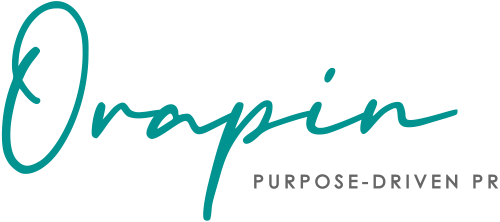 The holidays are underway and your office may be a little less hectic due to staff vacations and family outings. So, it is a perfect time to capitalize on the “all is calm and bright” mood and place focus on your New Year marketing strategies. Let’s enter into the New Year with a prepared marketing strategy and content to keep your head space clear and focused.
The holidays are underway and your office may be a little less hectic due to staff vacations and family outings. So, it is a perfect time to capitalize on the “all is calm and bright” mood and place focus on your New Year marketing strategies. Let’s enter into the New Year with a prepared marketing strategy and content to keep your head space clear and focused.
Compose a content calendar
Prepare your Q1 blog and social media posts using a calendar format. Outlining what blogs and social media posts you want to share in January, February, and March will help you “see” holistically, how to craft content that speaks to the timeliness of the season. In your calendar, make note of where you want to distribute the content (e.g. your blog, newsletter, social media channels), and include any hashtags for social distribution.
For example, February is World Cancer Day, so you can use that as a springboard to write a blog post in February that shares stories of recovery to connect to your prospective donors. If appropriate, don’t forget to include a call to action (CTA) at the end of your blog posts to encourage readers to “learn more,” “download a guide,” or in most cases, “contact us” to volunteer or donate. The more value-add content you can provide, the better you will build trust and credibility with readers.
Research editorial opportunities
We find timing is critical when sending story ideas to reporters on behalf of our clients for news coverage, so an editorial calendar is a great guide to get you started. If you don’t have an outside marketing or PR partner helping you with media relations, December is the ideal time to research media outlet editorial schedules for the coming year. Most magazines and online news outlets publish editorial calendars, that is, calendars that detail feature story topics, publication dates and ad deadlines, to be published in their print and online issues. You will need to identify the top outlets where your target audiences are reading information about your company (or like-minded companies), then build a list of the priority outlets you want to target for coverage.
We find an excel spreadsheet works best in terms of cost-effective ways to manage your findings. Note details like outlet name, topic, description of the topic, ad deadline date, and publication date. Then, chronologically order by the nearest deadline to inform your media outreach efforts in the New Year. Finally, we recommend using the ad deadline date as a benchmark to inform when you should pitch media–usually big media outlets start editorial planning 3-6 months in advance. For example, if a story ad deadline is June 2018, you should start pitching the reporter in January 2018, with follow ups throughout the month and into February. Better to be ahead of the game, than behind it!
Plan your newsletters
Think about what you want your newsletters to do for you. When you send them out, what do you want your email recipients to do; how do you want them to react; how will you get them to open it? Start by creating themes or topics month to month. We find that by “theming” newsletters, it allows our clients to focus on a specific type of content and prevents a scattershot smorgasbord approach, where clients include everything they’ve ever written in one LONG email.
Next, outline compelling subject lines and test to understand what subject lines compel people to open the email–afterall, that’s the first hurdle in email marketing–getting people to open your email! Most email platforms like MailChimp and Constant Contact will allow you to A/B test subject lines and imagery. A/B testing is a way to test two variations to determine which one produces the best outcome (e.g. click through, donation, email opened).
After you’ve written the subject lines, figure out what content you want to include. It can be your latest blog post, a video, an upcoming event, etc. Finally, include a call to action at the end. Tell your recipients what you want them to do after reading the newsletter–contact you, donate, volunteer, register, etc. You can create a newsletter calendar, similar to the format of your content calendar, to organize themes, concepts and content by month.
Lay out mobile marketing campaigns
Mobile content will continue to be a go-to way people find information. As you work to target new donors, new volunteers and strengthen current audience interest, it will be imperative to organize your mobile marketing campaigns for the year. Just like your content and newsletter calendars, take a look at the enter year ahead to identify opportunities to share relevant news about your organization.
For example, if you are a nonprofit dedicated to promoting energy conservation, World Conservation Day on December 14 is probably a relevant holiday to capitalize on. You can create a series of mobile ads on Facebook, Twitter, wherever your audiences are searching on mobile, and prime them to donate to your organization up to the actual day. Create compelling imagery that speaks to the significance of your organization and inspires an emotional response to “click” through to your website or landing page.
We, know–this can be a pain point for many social enterprises and nonprofits without a technical background. However, now is the perfect time to create a list of website updates you want to make. You may see an uptick in web traffic during the gift-giving season, so you should have a larger pool of data to review and analyze to accurately see what pages are garnering the most attention and what pages need some love, via Google Analytics or whatever analytics tracking tools you have installed on your website. Looking at your analytics when you have potentially “heavy” traffic months will help you see opportunities for improvement.
Create new landing pages for targeted promotions, update creative assets to freshen holiday-specific content, and assess current web hosting partners to ensure your site is loading quickly and managing increases in traffic. Maybe the data reveals that your site isn’t keeping people on your pages for very long. Or you find that people are going to a lot of pages and not spending adequate time on any of them. This may tell you that you need to streamline your main menu navigation to create a streamlined user journey. Save yourself the headache and consult with an outside marketing company to get a “third party” perspective and understand what needs to be updated to make your website work best for you.
These pre-planned and well-researched activities will give you peace of mind as you enter into the New Year and allow you and your team to focus on work that is producing results.
Happy marketing for a blessed and prosperous New Year!

Rhiannon Hendrickson is the founder and CEO of Orapin, which helps purpose-driven organizations transform their random acts of PR into a strategic, consistent approach that generates greater awareness and impact. She has worked with organizations of all sizes across myriad industries and causes to develop earned media and thought leadership programs that generate awareness, engagement, and, ultimately, support for those that are making a meaningful impact.
